
| The Oregon Workers’ Compensation Division received notification of 37 compensable fatalities in 2006, the third-lowest number reported since the state began tracking the statistic in 1943. | 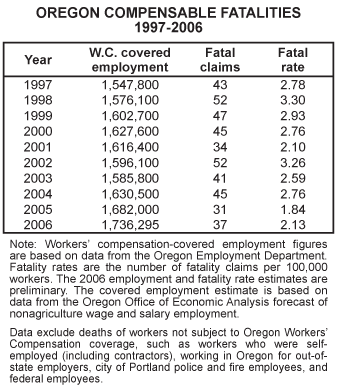 |
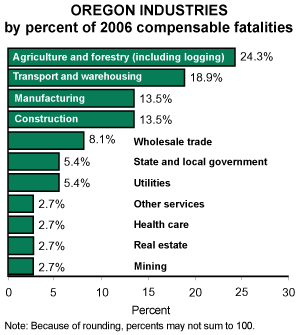 |
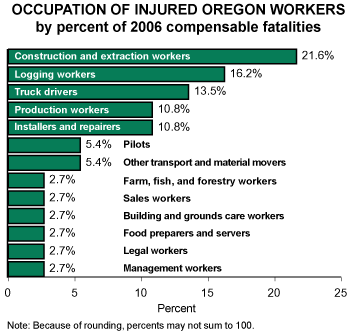 |
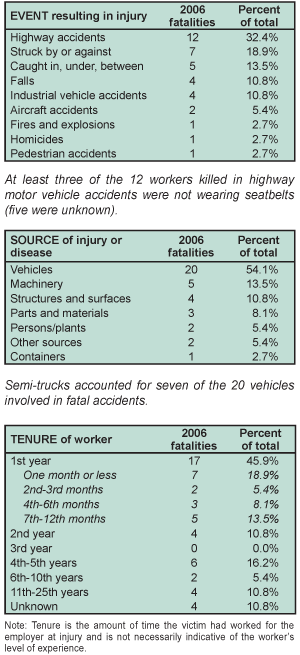 |
Compensable Fatality Facts,
|
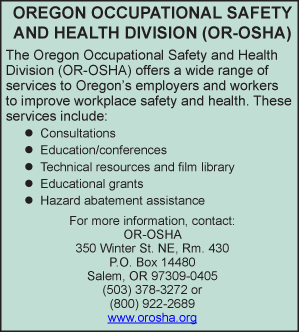
Fatality/claims data
Visit the DCBS Web site at http://dcbs.oregon.gov. Select the “Statistical Reports” link for additional workers’ compensation claims data and other statistical reports, or call the Information Management Division at (503) 378-8254.
Census of fatal occupational injuries
National work-related fatality data can be found on the Bureau of Labor Statistics' Web site at: http://www.bls.gov/iif/oshcfoi1.htm
Fatality assessment and control evaluation
Information about Oregon Health Sciences University's Fatality Assessment and Control Evaluation Program (FACE) can be found at: http://www.ohsu.edu/croet/face/
Employer workers' compensation coverage
For additional information about employer coverage requirements, you may contact the Workers' Compensation Division Employer Compliance Program at wcd.employerinfo@state.or.us,
call (888) 877-5670, or find it on the Internet at: http://www.cbs.state.or.us/external/wcd/index.html
Classification systems
Data are classified according to the following classification systems:
- Occupational Injury and Illness Classification System (OIICS)
- Standard Occupation Classification System (SOC)
- North American Industry Classification System (NAICS)
Click here to see the printable version of this brochure.
If you have questions about the information contained in this document, please contact by e-mail or phone: Tasha Hodges, (503) 947-7991, Research Analyst, Research & Analysis Section, Information Management Division
In compliance with the Americans with Disabilities Act (ADA), all IMD publications are available in alternative formats by calling (503) 378-4100 (V/TTY). The information in IMD publications is in the public domain and may be reprinted without permission.
This document was originally published in June 2007
[Printed form 440-0947 (6/07/COM)]